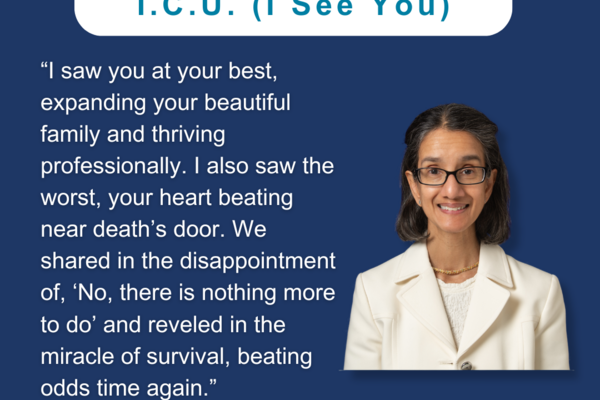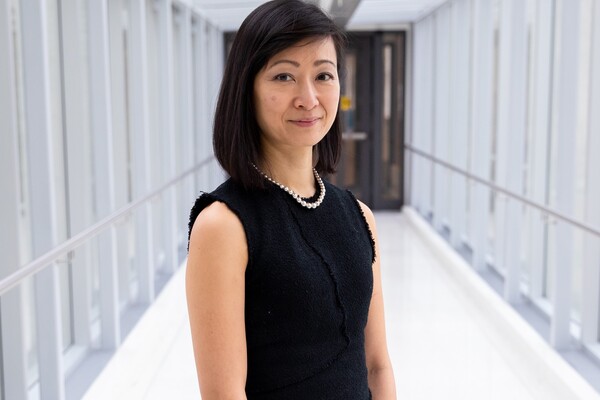Main Second Level Navigation
- Welcome
- Why Toronto?
- History of the Department
- Vision & Strategic Priorities
- Our Leadership
- Our Support Staff
- Location & Contact
- Departmental Committees
- Department of Medicine Prizes & Awards
- Department of Medicine Resident Awards
- Department of Medicine: Self-Study Report (2013 - 2018)
- Department of Medicine: Self-Study Report (2018 - 2023)
- Communication Resources
- News
- Events
Chair’s Column: Physician Supply-Demand Mismatch & the Survival of Academic Medicine

Physician Supply-Demand Mismatch & the Survival of Academic Medicine
Working together to solve the crises we face
The health care system crisis we are experiencing was not caused by the COVID-19 pandemic, but the pandemic has brought an already over-taxed ‘system’ to its knees. There are many issues to address, but one that I fear is flying too far under the radar of policy makers is the obvious mismatch between the supply of specialist medicine physicians with the ever-growing demand for care. This imbalance is now chronic, worsening, and taking a toll on the wellbeing of faculty members and learners alike. Internal Medicine Program Director Jeannette Goguen likens the situation to trying to cover a large pizza with too little sauce!
The focus of the university is the academic mandate – teaching and scholarly activities. But for clinical departments like ours, academic responsibilities cannot be easily separated from day-to-day clinical responsibilities. More clinical demand with fewer clinical resources to meet that demand jeopardizes our teaching mandate and academic productivity.
How did we get here?

On the demand side, population aging, and rising prevalence of obesity have resulted in an exponential rise in the prevalence of people living with multiple and often complex chronic conditions, and well into their 9th and 10th decades. Advanced therapeutics have contributed to increased survival of people with previously fatal conditions, e.g., inherited genetic conditions and cancers. Access to information via social media and rising expectations of patients and their families for access to health care providers have increased demand for specialist consultation – a “second opinion”. And lest we forget, the population of Toronto has grown substantially. Together, these changes have increased both the need for and the demand for medicine services, including visits to the emergency department, ambulatory medicine clinics, and in-patient medical admissions.
On the supply side, the evolution of personalized medicine and the high prevalence of comorbid conditions renders shared patient-physician decision making more time consuming and challenging. Information systems, e.g., the electronic medical record, which has many positive aspects, reduces physician’s time providing direct patient care, as have reductions in the availability of other health professions, e.g., physical therapists, social workers, and pharmacists. Generational shifts among physicians regarding the values placed on work, and work-life balance, are affecting the way physicians – faculty and learners - want to work – appropriately so! The 70-hour work week is generally seen as undesirable or frankly impossible due to child-care and other care-giving responsibilities. So, it is increasingly necessary to recruit 2 or even 3 physicians to cover the clinical load of a single retiring physician. And all this while, MD student and resident enrollment has remained unchanged and, in some cases, even declined. Thus, while demand for care grows, physician supply is shrinking, placing unsustainable strains on trainees and faculty members, and challenging our ability to devote appropriate and necessary attention to our teaching and research mandates.
What have we done about it?
I was asked by a consultant what levers we have to reduce patient demand to help us cope. With no formal OFF button to stem the steady flow of patients to our clinics and hospitals, efforts have focused on keeping people out of the hospitals and emergency departments by providing urgent or semi-urgent assessment of patients in the out-patient setting or diverting stable patients from the emergency department to a clinic. In general, these models have been helpful, and good for patient care, but they appear to have done little to reduce the overall burden of hospital-based care required of medicine to provide.
We are a university that prides itself on its scholarly productivity – excellence in teaching, education, quality and innovation and research of all kinds – in addition to high quality patient care. But patient care always trumps academic responsibilities. Thus, to continue to be the high standard academic department we are, we must ensure our faculty incorporate the right distribution of physicians focused on each of clinical care, teaching/education, and research. With this in mind, we have re-examined our workforce and agreed that the future requires many more physicians, and other health professionals, whose primary focus is on delivery of high-quality patient care to balance those focused principally on education or research. We created a 90:10 Clinician Teacher role – individual focused 90% on clinical activities – for recruitment to specialities with the greatest immediate clinical needs, and hospitalist programs and resident-independent units (RIUs) have been established across our teaching hospitals to reduce the clinical pressures on our teaching units. And we are recruiting as fast as we can. In 2014, our department was comprised of 711 full time physicians, we now have over 900, even with retirements. There are four areas in particular where we cannot seem to recruit faculty fast enough to meet the clinical needs: neurology for stroke/dementia, malignant hematology and medical oncology for cancer, and GIM and EM for the growing population with multimorbid chronic diseases that fill up to 60% of hospital in-patient beds. Of 326 recruits to DoM over the past few years, the majority were to these clinical disciplines (40 to GIM, 54 to emergency medicine, 28 to hematology, 28 to medical oncology, and 29 to neurology).
Recruitment, alone, will not solve our problems, for many reasons. These include the following:
- Major shortages in nursing and allied health professionals
- Insufficient physical space across our hospitals for provision of ambulatory care, teaching, and administrative infrastructure.
- Insufficient provincial funding to hire physician extenders, e.g., physician assistants, nurse practitioners, family physician hospitalists.
- Insufficient number of trainees in under-graduate and post-graduate medicine to fill the clinical gaps, resulting in fierce competition across hospitals/institutions for a limited number of individuals to be recruited as staff/faculty, to provide hospitalist roles, and to provide locum, evening, and weekend coverage.
Premier Ford has announced an increase in funded MD and residency spots (if he wins the election). That’s great, but these changes will not have major impact for several years, when this larger cohort graduates and enters practice!
The bottom line? This is a crisis of the greatest magnitude - that we must collectively solve. We understand the issues, we are best suited to identify and implement solutions.
We need to investigate all possible options for health human resource support to reduce the gap in the short term, including through recruitment, attention to the training pipeline, perhaps advocacy for expedited licensing of internationally trained internists/specialists who have been unable to practice. We need to challenge the workflow practices and policies across our hospitals to ensure that they provide the biggest bang in patient care for the buck. Thanks to Fahad Razak, Amol Verma and their DoM colleagues, we can utilize the GEMINI registry to conduct comparative effectiveness studies to inform what we do. We need to invest in making our academic medicine environment one where young people want to work. We need to have tough conversations about allocation of residency spots across our 21 training programs – are we aligning the training opportunities to future needs or based on historical practices? Should we reduce the overall number of rotations for some programs to optimize / expand the number of learners on the remaining rotations? If so, what metrics will be used to make such decisions?
We need to make some tough decisions - now! Want to help?
If so, please join us this Friday, May 6th from 1:00 PM to 4:00 PM for a facilitated virtual brainstorming session to discuss how the Department of Medicine can support efforts to tackle issues including but not limited to health system transformation. Please register here: https://dombrainstorm0522.eventbrite.ca.
For the wellbeing of our patients, learners, and ourselves, we must be agents of change. Let’s figure this out together.



